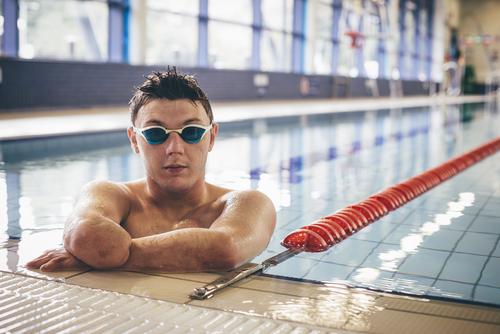 At a young age, we’re taught that perseverance and hard work lead to success. And we all have seen the success-through-struggle stories of professional athletes who faced great adversity but persevered, eventually making their way to the world’s greatest sport stages. But what about all the other athletes who kept persevering without ever realizing their goals?
At a young age, we’re taught that perseverance and hard work lead to success. And we all have seen the success-through-struggle stories of professional athletes who faced great adversity but persevered, eventually making their way to the world’s greatest sport stages. But what about all the other athletes who kept persevering without ever realizing their goals?
Maybe your young athlete has been struggling for a few seasons. Should they keep pushing? Or throw in the towel. The answer we’ve been indoctrinated into believing is that they should keep pushing, defying the odds and learning lessons along the way. That’s perseverance, right?
Actually, board-certified family physician and TrueSport Expert Deborah Gilboa, MD, explains that the way we talk about perseverance could use a reset. Here, we’re talking about how to re-adjust when persevering towards a particular goal doesn’t seem to be leading to success for your athlete—and what to do instead.
Remember Narratives of Perseverance Favor Success
The problem with perseverance, says Gilboa, is that we talk about it constantly, but never explain how to do it. “In every inspirational lecture, keynote, podcast, and church service, everybody talks about persevering. They tell you about people who persevere against all odds. They tell you the story of Thomas Edison and the 9,000 light bulbs that didn’t work. They tell you about authors who sent manuscripts to hundreds of agents before they got a call back about their now-bestselling book. But the examples are all of people who did something really, really hard, and eventually, their hard work paid off. But is that the only story worth telling? We never talk about people who persevered, pivoted, and found a different type of success, but that’s what happens for most people and what we really need to learn from.”
Redefining Perseverance
 When we’re young, we’re told, “If at first you don’t succeed, try, try again.” But that isn’t exactly the way Gilboa wants you to think about perseverance—after all, there’s a reason that as adults, we’re reminded of the oft-quoted saying that doing the same thing over and over again and expecting different results is the definition of insanity. “Perseverance is about trying again but also changing something if what you were doing wasn’t working,” she says. “It’s not doing the exact same thing over and over and hoping for different results.” True perseverance is making thoughtful, focused changes to your practice and stepping back to assess the results of the change.
When we’re young, we’re told, “If at first you don’t succeed, try, try again.” But that isn’t exactly the way Gilboa wants you to think about perseverance—after all, there’s a reason that as adults, we’re reminded of the oft-quoted saying that doing the same thing over and over again and expecting different results is the definition of insanity. “Perseverance is about trying again but also changing something if what you were doing wasn’t working,” she says. “It’s not doing the exact same thing over and over and hoping for different results.” True perseverance is making thoughtful, focused changes to your practice and stepping back to assess the results of the change.
Adjusting the Goalposts for Success
At some point, your young athlete may simply be faced with a tough situation where no amount of perseverance is going to change the outcome. This is where redefining success can be helpful, says Gilboa. “What is your purpose? If your purpose is basketball, if that is your passion and you love it, what can you do when performance becomes a barrier? If being part of the team is important to you, you may be able to stay on the team, riding the bench but filling in when someone is injured. If you love actually playing, maybe there’s a club league you can get involved with where you get plenty of playing time. Either way, if you want to be a basketball player, then you’ll have to come to terms with the fact that getting to a high level of proficiency and achievement in the sport isn’t a realistic goal. Being a basketball player is your goal. However, if what you want to be is an elite athlete, then you may have to pick a different sport that favors your body type and abilities.”
Check In Regularly
 Once your athlete has a goal that’s aligned with their purpose, it’s easier to persevere in the right direction. But that still requires frequent check-ins. “One of the lessons athletes need to learn about perseverance is how to check in and reassess. That means every fifth, or 10th, or 100th repetition, you really need to make sure that what you’re aiming at still aligns with your goals,” says Gilboa. It’s not a ‘lack of perseverance’ if an athlete wants to pivot and try something else—sometimes, it’s the more courageous option.
Once your athlete has a goal that’s aligned with their purpose, it’s easier to persevere in the right direction. But that still requires frequent check-ins. “One of the lessons athletes need to learn about perseverance is how to check in and reassess. That means every fifth, or 10th, or 100th repetition, you really need to make sure that what you’re aiming at still aligns with your goals,” says Gilboa. It’s not a ‘lack of perseverance’ if an athlete wants to pivot and try something else—sometimes, it’s the more courageous option.
Recognize that Perseverance is a Teachable Skill
Coaches and parents are guilty of assuming that a young athlete simply isn’t capable of persevering through tough times. But as Gilboa explains, perseverance is a skill that comes with practice and repetitions. “Perseverance isn’t a character trait that an athlete is born with, it’s a skill that they develop,” she says. “We tend to think that people are born with a good work ethic. Yes, most of us have known a preschooler who would sit with their tongue clamped firmly between their teeth, working on something that they were determined they could do for a remarkably long time. That’s amazing: Some kids do have a predisposition towards the skill of perseverance. But no matter where an athlete is starting from, there is room for growth.”
Focus on the Process
 “Once you think of perseverance as a skill, you know that it’s achievable for everyone,” Gilboa says. “But instead of citing examples of athletes who have succeeded by persevering and practicing hard, actually focus on the steps your athlete needs to take. That means figuring out what the athlete is trying to achieve. Pick a certain athletic skill, like making free throws. Identify how the athlete has done it in the past, then have them practice while making small changes. Encourage your athlete to think like a scientist, which means changing just one tiny thing each time, to see what difference it makes.”
“Once you think of perseverance as a skill, you know that it’s achievable for everyone,” Gilboa says. “But instead of citing examples of athletes who have succeeded by persevering and practicing hard, actually focus on the steps your athlete needs to take. That means figuring out what the athlete is trying to achieve. Pick a certain athletic skill, like making free throws. Identify how the athlete has done it in the past, then have them practice while making small changes. Encourage your athlete to think like a scientist, which means changing just one tiny thing each time, to see what difference it makes.”
____________________________
Takeaway
While the trait of persevering through tough times is admirable, it’s important to make sure that energy is being directed in a way that’s reasonable. Help your young athlete define what success looks like for them, and then help them refocus their efforts towards that goal.



